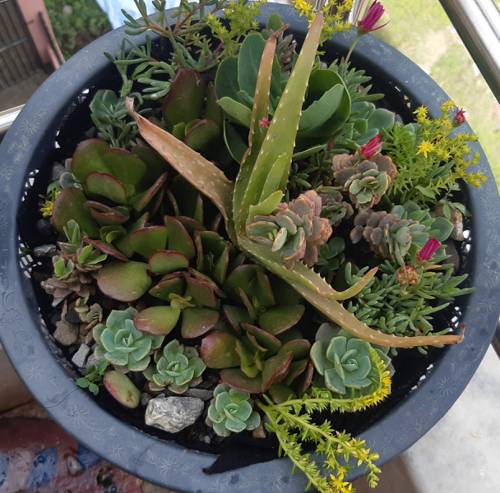
FAQ About Indoor Plant Atmosphere Suitability

What factors determine the suitability of indoor plants for specific home atmospheres?
The suitability of indoor plants for specific home atmospheres depends on factors such as light levels, humidity, temperature, and air circulation. Each plant species has its own specific needs that must be met for it to thrive. For example, plants like ferns require high humidity and indirect light, making them suitable for bathrooms, whereas succulents prefer bright, direct sunlight and dry conditions, making them ideal for windowsills.

Can kitchen heat affect indoor plants?
Yes, the heat in a kitchen can affect indoor plants. While some plants may thrive in warmer conditions, others may struggle with the consistent high temperatures and fluctuating humidity often found in kitchens. It’s important to choose heat-tolerant plants such as herbs or certain types of succulents for kitchen environments, and ensure they are not placed too close to heat sources like ovens or stovetops.

Why are bathrooms considered good places for certain indoor plants?
Bathrooms often have high humidity levels due to the frequent use of showers and baths, making them ideal for plants that thrive in moist environments. Plants such as ferns, spider plants, and peace lilies are well-suited to bathroom conditions, as they enjoy the humidity and indirect light typically found there. However, adequate ventilation is necessary to prevent mold growth and to ensure the health of the plants.

Which indoor plants are best suited for high humidity environments like bathrooms?
In high humidity environments like bathrooms, plants such as ferns, orchids, peace lilies, bamboo, and spider plants are excellent choices. These plants naturally thrive in environments with higher moisture levels and can even benefit from the increased humidity present in these areas.

What are some low light indoor plants suitable for dimly lit areas of the home?
Some indoor plants that thrive in low light conditions include snake plants, pothos, ZZ plants, and cast iron plants. These species have adapted to survive with minimal sunlight, making them ideal for areas of the home that do not receive much natural light, such as hallways and corners away from windows.

How does light availability impact indoor plant placement?
Light availability is crucial for the health and growth of indoor plants. Most plants require specific amounts of light to perform photosynthesis effectively. Bright, direct sunlight is suitable for succulents and cacti, whereas indirect light is more appropriate for plants like ferns and peace lilies. Insufficient light can lead to leggy growth and poor health, while too much light can cause leaf burn.

Are there indoor plants that can thrive in an air-conditioned environment?
Certain indoor plants can thrive in air-conditioned environments, where temperatures are cooler and quite stable. Plants like snake plants, ZZ plants, and pothos are known for their resilience and can tolerate the cooler and drier conditions typical of air-conditioned spaces. It's important to ensure these plants receive adequate light and are not placed directly under the airflow from air-conditioning units.

What indoor plants are suitable for warm climates inside a home?
For warm indoor climates, plants that typically thrive in desert-like conditions are the best choice. Succulents, cacti, and bromeliads are examples of plants that prefer warmer temperatures and drier conditions, making them well-suited for homes in warm climates.

Can indoor plants help with air quality in various home environments?
Yes, indoor plants can improve air quality by absorbing pollutants, producing oxygen, and increasing humidity through their natural processes. Plants like spider plants, peace lilies, and English ivy are particularly effective at filtering toxins from the air, helping to create a healthier living environment.

How can I increase humidity for indoor plants in dry home environments?
To increase humidity for indoor plants in dry environments, you can mist the plants regularly, place a tray of water with pebbles underneath the plant pots, or use a humidifier in the room. Grouping plants together can also create a microenvironment with higher humidity as the collective transpiration increases moisture levels in the air.

Which plants are advisable for placing near windows with direct sunlight?
Plants that are well-suited for placement near windows with direct sunlight include succulents, cacti, jade plants, and aloe vera. These plants require a lot of light and can tolerate the intense conditions found near sunny windows.

Is it possible for indoor plants to get too much light?
Yes, indoor plants can get too much light, which can cause leaf burn, fading, or browning of the leaves. This is common for plants that require indirect light only and are exposed to intense direct sunlight for prolonged periods. It is essential to understand the specific light needs of each plant to place them in the most suitable location within the home.

Which indoor plants can tolerate fluctuating temperatures in a home?
Plants that can withstand fluctuating temperatures include snake plants, ZZ plants, and yucca. These hardy plants are less sensitive to temperature changes, making them a more suitable option for homes where temperatures might vary throughout the day or between seasons.

How does air circulation affect indoor plant health?
Proper air circulation prevents the buildup of humidity around plants, reduces the risk of fungal diseases, and helps regulate temperature levels. Ensuring there is good airflow can promote healthier growth and mitigate issues related to stagnant air, which can lead to mold or pests.

Can I keep indoor plants in a room without windows?
Yes, it is possible to keep indoor plants in a windowless room by using artificial grow lights to provide the necessary light for photosynthesis. Low light plants, such as the ZZ plant or snake plant, are more adaptable to artificial lighting conditions and can thrive even in the absence of natural sunlight.

Which indoor plants are good for purifying air in the bedroom?
Plants that are effective at purifying air in the bedroom include snake plants, peace lilies, and aloe vera. These plants not only improve air quality but also do not emit carbon dioxide at night, making them ideal for sleep environments.

Are there specific indoor plants that can survive with minimal watering?
Yes, certain indoor plants can survive with minimal watering, such as succulents, cacti, and snake plants. These plants are adapted to store water in their leaves or stems and are particularly resistant to drought conditions, making them low-maintenance options for indoor environments.

What challenges might arise when placing indoor plants in air-conditioned rooms?
In air-conditioned rooms, indoor plants may face challenges such as reduced humidity and increased dryness, which can lead to wilting or browning leaves. Ensuring the plants are not directly in the path of cold air and providing occasional misting can help mitigate these issues. Choosing drought-tolerant plants is also advisable.

Which indoor plants can improve the atmosphere in a busy office environment?
Indoor plants that can enhance the atmosphere in an office include pothos, spider plants, and ZZ plants. These plants are not only easy to maintain but also help improve air quality and reduce stress, contributing to a more pleasant and productive work environment.

How often should I rotate indoor plants for even light exposure?
It is advisable to rotate indoor plants every few weeks to ensure all sides receive equal light exposure. This can help prevent uneven growth and keep the plant looking balanced and healthy. Regular rotation also allows you to inspect the plant for any signs of stress or pest activity.
